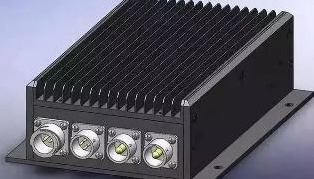What is the working principle of DC-DC converter_DC-DC converter?
What is a DC-DC converter?
A converter that can convert one DC voltage to another DC voltage. Divided into three categories: boost DC / DC converter, buck DC / DC converter and buck-boost DC / DC converter.

Alias: switching power supply or switching regulator
Composition: diode, transistor, capacitor, etc.
Working principle
One: DC-DC converter is generally composed of control chip, inductor coil, diode, transistor, capacitor. When discussing the performance of the DC-DC converter, if it is only for the control chip, it is impossible to judge its merits. The characteristics of the peripheral circuit components and the wiring of the substrate can change the performance of the power circuit, so a comprehensive judgment should be made.
2: Modulation method 1: PFM (pulse frequency modulation method) switch pulse width is fixed, by changing the frequency of pulse output, the output voltage is stabilized. 2: The frequency of the PWM (pulse width modulation) switching pulse is fixed, and the output voltage can be stabilized by changing the pulse output width.
Three: In general, the performance differences of DC-DC converters with two different modulation methods, PFM and PWM, are as follows. PWM frequency, PFM duty cycle selection method.
Virtual instruments quickly occupied the market with their advantages of high cost performance and strong openness, and became a new economic growth point for measurement and control instruments. The most obvious sign of entering the information age is the penetration and popularization of information networks in various industries, among which Ethernet is the most typical. Ethernet is a kind of network with low cost, strong throughput, good adaptability, and increasingly improved network management capabilities. It can easily incorporate data collection systems into local area networks or even the Internet. The Ethernet bus may replace other existing bus modes and become the preferred interface of the virtual instrument data acquisition system.
The design of the Ethernet interface usually has three schemes: one is to use FPGA to realize the description of each layer such as the physical layer, network layer, access layer and transmission layer. The second is to implement network transmission based on the physical layer network controller and microprocessor. The advantage of this solution is its flexibility. It can use different protocols for different systems and can simplify the protocol. The third is to use a dedicated protocol processing chip. To achieve Ethernet data transmission, the hardware circuit of this solution is relatively simple, the development cycle is short, and there are more and more chips to choose from, and it integrates multiple protocols and is very convenient to use.
Application field:
At present, DC-DC converters are widely used in mobile phones, MP3s, digital cameras, portable media players and other products.
Belongs to the chopper circuit in the classification of circuit types.
If you want to know more, our website has product specifications for DC-DC converter, you can go to ALLICDATA ELECTRONICS LIMITED to get more information

